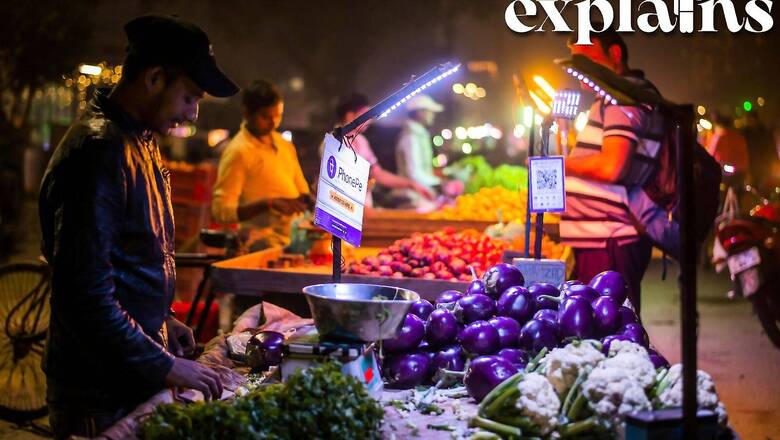
views
Indians can now send money to friends, colleagues, and relatives in Singapore using Google Pay, PayTM, and other digital payment systems, as the Unified Payments Interface (UPI) connects to PayNow from Tuesday. Read more on this
The linking of the two real-time payment systems was launched through videoconferencing by Prime Minister Narendra Modi and his Singapore counterpart Lee Hsien Loong, enabling faster and more cost-effective money transfers.
A new milestone in India-Singapore relations as we link real-time digital payments systems. ???????? ???????? https://t.co/SubBSNyMO8— Narendra Modi (@narendramodi) February 21, 2023
Shaktikanta Das, governor of the Reserve Bank of India (RBI), and Ravi Menon, managing director of the Monetary Authority of Singapore, led the launch (MAS) of this cross-border connectivity at 11 AM.
Amid the development, let’s take a look at what UPI is and how it works:
What is UPI?
UPI, or Unified Payments Interface, is a real-time payment system that allows for the quick transfer of payments between two bank accounts using a mobile platform. As a result, UPI is a concept that allows different bank accounts to be accessed using a single mobile application. The National Payments Corporation of India devised this concept, which is overseen by the RBI and the IBA (Indian Bank Association), says a report by Economic Times.
Some of UPI’s features:
- Funds are transferred instantly via Immediate Payment Service (IMPS), which is faster than NEFT. Because it is entirely digital, UPI is available 24 hours a day, seven days a week. A single smartphone app is available for accessing multiple bank accounts, says the report by Economic Times.
- It makes use of a Virtual Payment Address, which is a unique ID provided by the bank.
- It also makes use of an Account Number with an IFSC Code and a Mobile Number with an MMID, or Mobile Money Identifier. Each payment requires an MPIN, or Mobile Banking Personal Identification number.
- USSD service is also available, and customers can use it by dialling *99# and selecting services such as fund transfer, send money, request money, non-financial services, balance Inquiry, update MPIN, and so on. (A service charge of Rs 0.50 applies.)
- Every bank offers its own UPI for Android, Windows, and iOS platforms. Banks may or may not charge a fee for UPI services.
- Bill Sharing feature: It is ideal for merchant payments, utility bill payments, in-app payments, over-the-counter payments, and barcode-based payments.
How Does UPI Work?
To facilitate seamless settlement across accounts, UPI leverages existing systems such as Immediate Payment Service (IMPS) and Aadhaar Enabled Payment System (AEPS). It supports push (pay) and pull (receive) transactions, as well as over-the-counter or barcode payments and numerous recurring payments like utility bills, school fees, and other subscriptions, says a report by Investopedia.
After establishing a single identification, the method enables mobile payments to be sent without the use of credit or debit cards, net banking, or the need to enter account information. This would not only increase the security of critical information, but would also connect people with bank accounts via cellphones to carry out hassle-free transactions.
How to Make a UPI Account
A UPI account can be created in five simple steps, according to a report by Forbes.
- To take advantage of cashless payments and instant money transfers using UPI, you’ll need two things: a smartphone and a bank account with a UPI-member bank.
- Your cell phone number must be included in your bank account details. As of now, the majority of banks in India are members. In 2016, 21 banks permitted UPI. This number has now been expanded to 216 banks by 2021.
- The next step is to install any UPI-compatible app on your smartphone. PhonePe, Paytm, Google Pay, BHIM, MobiKwik, Uber, SBI Pay, and BOB UPI are some famous UPI apps.
- Once the download is complete, the software will prompt you to create a virtual ID (identity). This is your one-of-a-kind ID for making or receiving UPI payments. Your bank will then email you a one-time password (OTP) to validate that it is actually your bank account.
- After the verification is complete, you can create your Virtual Payment Address (VPA).
How UPI Compares to Other International Payment Systems
According to a report provided by ACI Worldwide, the Indian real-time payments market is well developed when compared to other markets such as the United States, the United Kingdom, Canada, and Australia.
The paper titled ‘Prime Time For Real Time 2022,’ says India’s real-time payments include the Immediate Payment Service (IMPS) and the Unified Payments Interface (UPI), both of which have grown in popularity in recent years.
“In 2021, India accounted for the most number of real-time transactions” (48.6 billion). This figure was about three times that of the closest competitor, China (18 billion transactions in 2021), and nearly seven times that of the world’s major economies – the United States, Canada, the United Kingdom, France, and Germany (7.5 billion),” according to the research, says a report by Outlook.
Ankur Saxena, Head of India and South Asia, ACI Worldwide had said, as per the report, “India is the poster child for real-time payments and a shining example of how a coordinated, collective, nationwide effort can unlock huge economic and social potential. India’s craving for cash may be plummeting, but there is still a great deal more to do. It is time to accelerate our efforts and expand this impact beyond the top-tier metropolitan areas, and replicate our success for the benefit of the entire country.”
Read all the Latest Explainers here



















Comments
0 comment